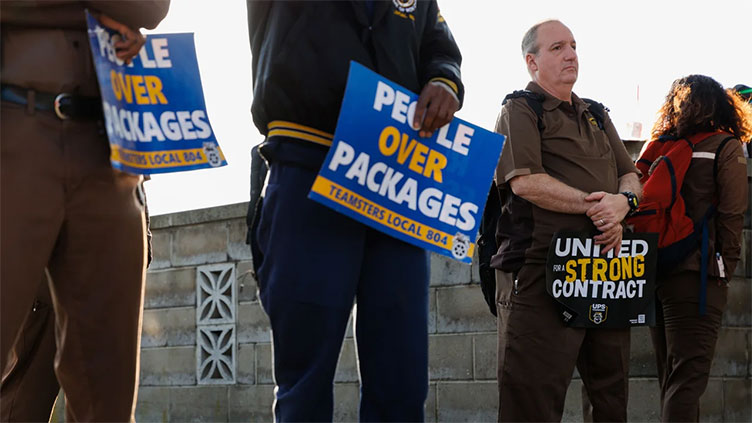Strikes make a comeback in America

Business
Thousands of workers have gone on strike in recent months to demand higher pay and improved benefits
(Web Desk) - The United Auto Workers strike isn’t happening in a vacuum. It’s part of a growing movement of US workers walking off the job.
From Hollywood writers to nurses, factory workers, and Starbucks baristas, thousands of workers have gone on strike in recent months to demand higher pay and improved benefits and working conditions. The Teamsters union recently used the threat of a strike by 340,000 members at UPS to secure most of their demands, including pay raises and new air conditioned vans.
Labor has become more aggressive because of decades of stagnant wages for lower and middle-income workers, while the richest Americans expanded their wealth to unprecedented levels. Corporate profits have soared since the pandemic, and workers want a greater piece of the profits.
“There’s a generational change taking place in the labor movement and its thinking,” said Joseph McCartin, a labor historian at Georgetown University.
Between 1979 and 2022, the inflation-adjusted annual wages of the top 1% of workers rose by 145%, while the average annual wages of the bottom 90% rose by only 16% — about a tenth as fast, according to the Economic Policy Institute. Several factors contributed to these trends, including deregulation, the decline of unions, and little change in the federal minimum wage.
The auto workers, for example, are taking aim at CEO compensation at Ford, General Motors and Stellantis — which has grown by more than 40% over the last four years — to press their case for worker wage increases.
Workers also believe they have more bargaining power due to a tight labor market and the strongest public support for unions in decades.
“We’re living through a strong labor market and economy, and workers and unions feel more leverage when economic forces are blowing in the direction they have been,” McCartin said.
Workers gained power during the pandemic as Covid-19 cast a spotlight on essential workers’ sacrifices and the vast disparities among America’s workforce.
Unemployment is at a near-decades low and employers are posting more job openings than there are unemployed job seekers. That gives workers some leverage to demand more of what they want.
Approval of labor unions is also at its highest point since 1965, according to Gallup. The majority of the public sees unions as key to improving pay and working conditions. Unionized workers earn on average 10.2% more in wages than non-unionized peers.
“Today’s striking workers may have a stronger hand in their negotiations than they would have had in the past given today’s elevated public support for unions,” Gallup said in a news release.


